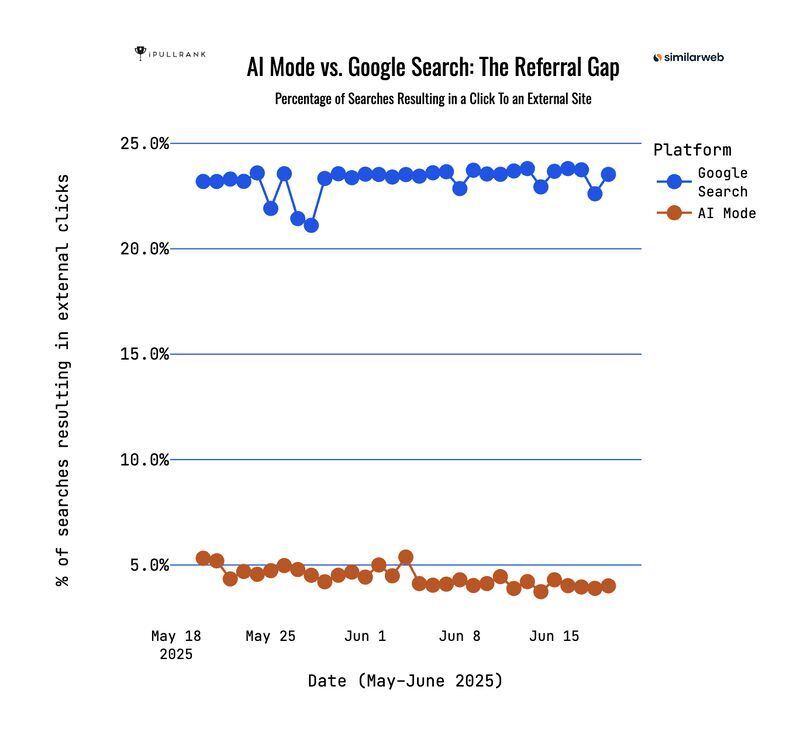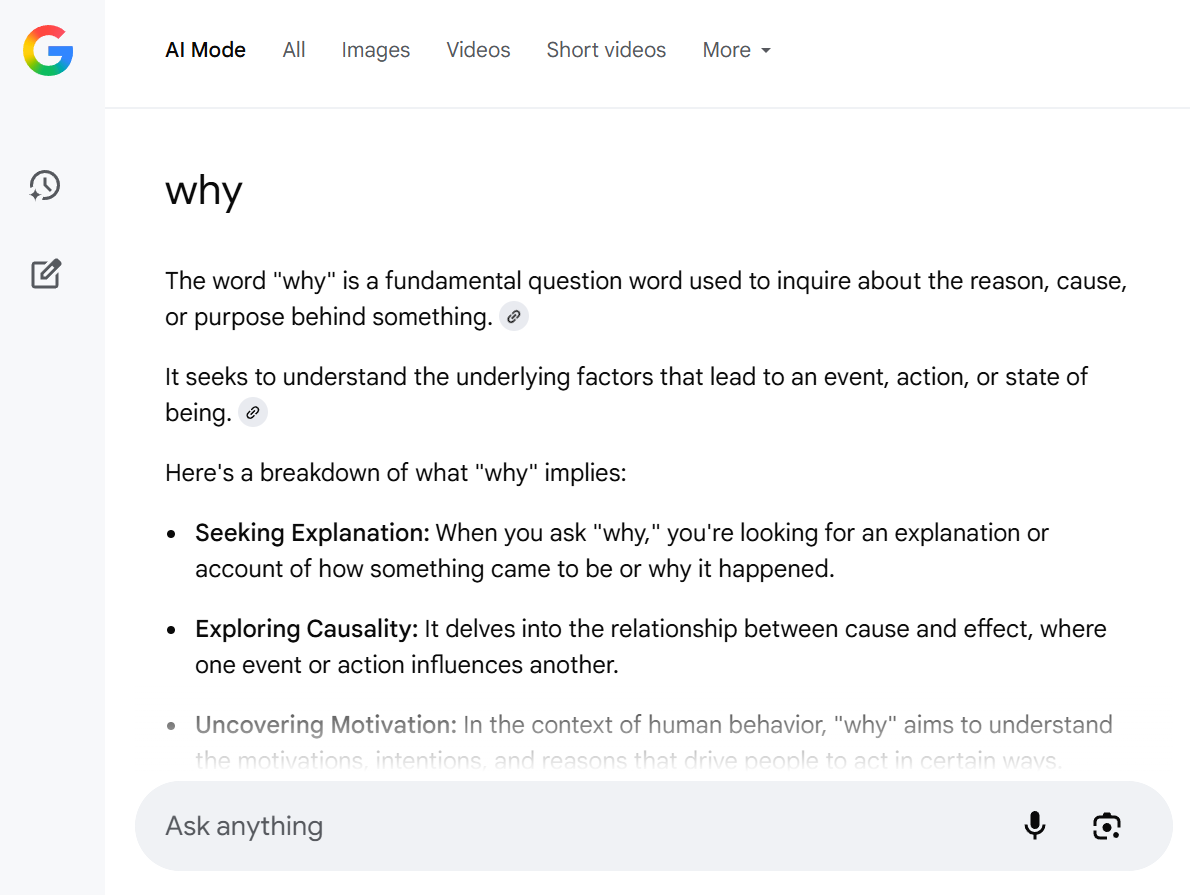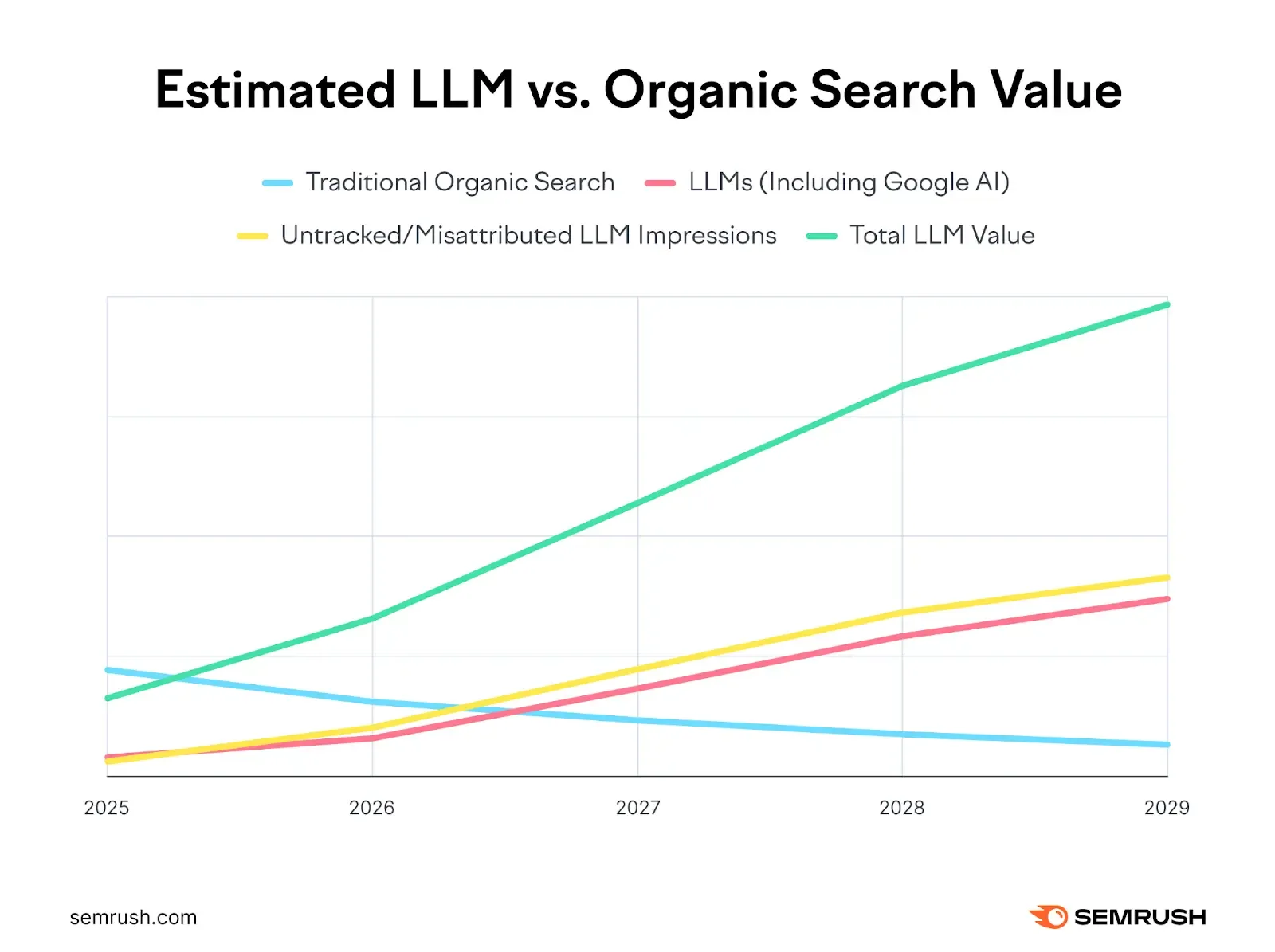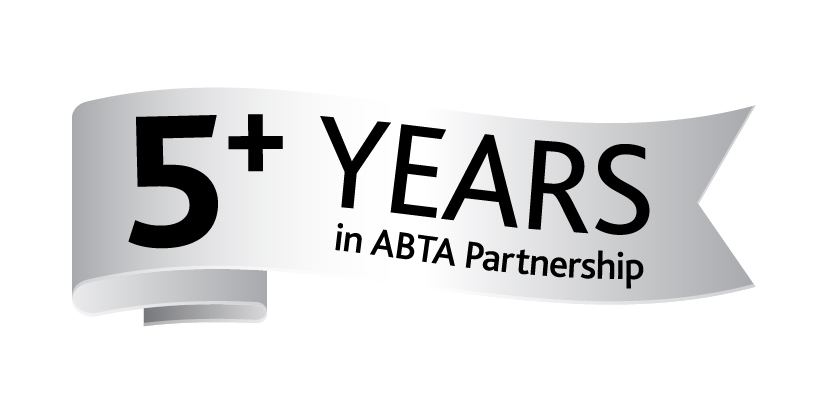Google’s AI Mode has crash landed in the UK, introducing a new method for users to search the internet.
Instead of the traditional blue links dominating the results page, Google’s AI Mode offers an AI-curated response to search queries, in which users can then follow up with more queries or ask multi-part questions and get back relevant answers. This change marks one of the biggest transformations in search engine history and will likely have significant implications for digital marketers (if successful). It’s being pushed by Google as a search utopia, but what does it mean for the future of the internet?
What is Google’s AI Mode?
AI Mode is Google’s next big thing in their efforts towards a search generative experience. It uses AI to produce natural-language responses to user queries, essentially removing the need to click on links and browse websites to find our answers. Users can receive information in real-time (whether it’s wholly correct is another issue), complete with sources or product suggestions from a range of multimodal inputs – text, voice or image. In short, Google is becoming the answer, not just the gateway to one.
What does AI Mode mean for digital marketers in the UK?
1. Organic traffic will decline further
Since Google’s AI Overview rollout, click through rates have dropped by 32% for the top position, and we’ve been seeing a ‘crocodile’ on our search console graphs. What I’m describing is the widening gap between impressions (high) and click through rate (low), which suggests we’re already on a slippery slope to a zero-click world. The launch of AI Mode is going to get us to the bottom of the mountain much quicker!

With Google delivering answers directly on their search results page, fewer users will need to click through to websites to find what they’re looking for. While 25% of traditional Google searches end in a click, early AI Mode data from Similarweb shows that this is the case for only 5% of AI Mode searches. That’s an 80% drop in click-through rate! Digital marketers should not be surprised at the decline in organic traffic while AI Mode is still new and being tested; we’ll wait and see if it sticks.

2. Traditional SEO will evolve
There may be a shift in priorities with traditional SEO evolving to incorporate AI optimisation. Google states that AI Mode will show information that is supported by high quality content from the web and other info sources, which means not much is changing in that aspect – we’re still expected to create content that is well written and trustworthy. However, LLMs are less reliant on traditional keyword-matching and more focused on context, expertise and clarity, so putting more focus into writing concise, informative paragraphs backed by data might be the way to go. This is because users tend to search in a more conversational tone when using AI, rather than standard keywords we may be used to.

3. More focus on mid-funnel and commercial content
If I had to choose one thing that AI is good at answering, it’s those pesky ‘how to’ questions. Coming in close second are ‘what is’ or ‘why’. And it’s these types of questions that do not require a click through to a website if AI Mode has the answer right there on the screen! Why compete with a machine for these queries? While we can still create content like this to increase our topical authority and expertise, we can’t expect it to bring users to our sites anymore, so let’s shift our focus to something more profitable.
Mid-funnel and commercial-intent content like product pages, comparison guides, content linked to transactional keywords – these pages are more likely to earn clicks and conversions. Concentrating on optimising these types of pages is going to be important rather than relying on top of funnel traffic alone.

4. Brand visibility is more important than ever
According to Semrush, the average LLM visitor is worth 4.4x the average traditional organic search visitor in terms of conversion rate. This is likely because AI search visitors have already been equipped with all the information they need to make a decision on the product or service they want from the LLM. They’ve already made their comparisons without having to even go on your website, with brands showing up in 90% of AI Mode responses! This means brand visibility will be so important going forward, as well as brand sentiment. When users are comparing brands through AI, it’s almost like their friend giving them word-of-mouth recommendations, so you need to be on the forefront of the LLM’s ‘mind’ in order to be seen by possible customers.

5. Increased user engagement… but not on your website
Early data shows that usage sessions in AI Mode lasted 38% longer on average than traditional search sessions, shifting user attention away from websites and deeper into the search results page itself. This means your content could be getting a lot of engagement, but you won’t even know it! Traditional metrics like page views and time on site will become less reflective of user interest, which makes gauging that interest all that much harder. Even more challenging is the lack of visibility in how often you’re appearing on AI answers and how users are interacting with it. Tracking and reporting on your digital marketing efforts and performance is just going to get that much more difficult without paying for more tools to try and understand your online visibility.
It's still early days for AI Mode
At this point, AI Mode is still finding its feet. Volatility is high, as SE Ranking found out – only 9.2% of URLs matched across three tests of the same query being run on the same day – which only highlights just how experimental this feature still is. And we still don’t know when, or even if, this becomes the default version of Google given they are also testing ‘web guide’ view too.
While the impact of AI Mode is already being felt, it’s good to remind ourselves that we’re only at the beginning of this shift in search. For digital marketers, this is both a challenge and an opportunity. It’s a chance to adapt early, refine strategies and get ahead in positioning your brand for visibility in a more dynamic, AI-driven search landscape. If you’ve any questions about what this all means, why not get in touch with us for a chat!





